Lanita K. Brooks Colbert
Harlem Renaissance and Transatlantic Modernism
currently showing at the Metropolitan Museum of Art, addresses the controversy created by the MET’s 1969 exhibition, Harlem on My Mind: The Cultural Capital of Black America 1900-1968. The 1969 exhibition excluded works of fine art and sculptures by Black artists. Instead, the MET presented a social narrative of Harlem told through reproductions of newspaper clippings, photographs, film and audio recordings. The main critique of Harlem on My Mind was that it did not contain a single work of fine art by a Black artist. The BECC, Black Emergency Cultural Coalition, formed directly in response to the MET show, raised public awareness of discriminatory practices in the art world through public demonstrations which led to public unrest and boycotts of the exhibit before it opened. The MET listened and in 1972, consulted black art history academic, Dr. Lowery Stokes Sims, who later became the first African American head curator for the Department of Twentieth Century Art, and special project guest curators including Dr. David Driskell, artist and scholar, long considered a leading authority on African American art and Dr. Regina A. Perry, the first African American woman to receive a PhD in art history. Dr. Lowery Stokes Sims, during her twenty-year career at the MET, was responsible for the acquisition of dozens of important works by Blacks, Latinx, and Indigenous American artists, including many by women. During decades since the 1969 Harlem on My Mind exhibit, there has been greater commitment at the MET to intentionally acquire work by Black artists in multiple collecting areas. Now, Harlem Renaissance and Transatlantic Modernism gives us a clear and comprehensive picture of global black creativity, and its roots and aesthetics around art, race and identity while exposing society to the black experience and civil rights in the post-reconstruction and Jim Crow era. The exhibition opens a conversation on how literature, art, music, and theater of the Harlem Renaissance Movement played a central role in black identity from 1920 to 1940 in America and even today.
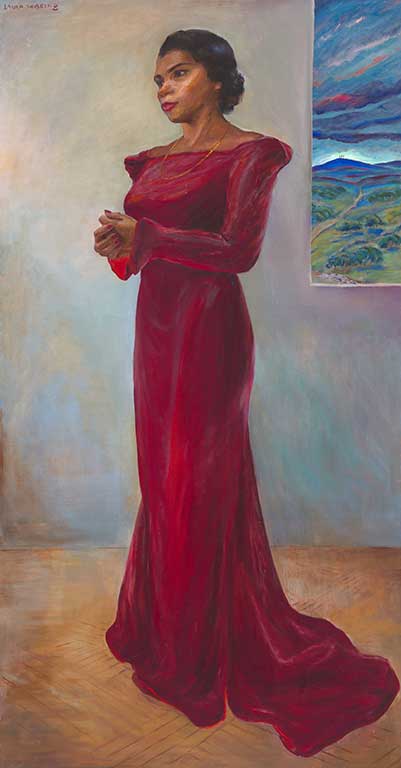
Harlem Renaissance and Transatlantic Modernism presents 160 works by Black artists from the Harlem Renaissance movement of 1921-1940, contemporary works of French, Belgian, German and English painters with Dutch and French Caribbean representation, including work by the present-day contemporary artist, Kara Walker and literary works of Langston Hughes, Zora Neale Hurston, Alain Locke, and W.E.B. Du Bois. The exhibition delves into many different aspects of the movement, mostly through the lens of paintings and sculptures, with illustrations, literature, printed posters, and photography focusing on the rising black middle class in US Northern and Midwestern cities bringing into full view pivotal moments in African American history from slavery, emancipation and the Harlem Renaissance. It is a comprehensive visual celebration of the complexity of the black experience known as the Harlem Renaissance Movement and its influential legacy.
Viewing the exhibition with a friend, a prolific collector of black art, we were in awe of number of works of well-known artists, such as Bearden’s The Block, Jacob Lawrence’s Pool Parlor, William H. Johnson’s Vieille Maison at Porte and Mailou Jones’s Cauliflower and Pumpkin that we have never seen as originals or reproductions. Photographs by James Van Der Zee were more than pictures of well-dressed upper middle class, black intellectuals and jazz but provided a historical creative space for black gay and queer in America from 1920-30. However, we left asking ourselves, why are we only now seeing the works of Archibald Motley’s Nightlife, Laura Fuller Waring’s Girl in Green Cap, Aaron Douglas’ Aspiration, Winold Reiss’ Portrait of Alain Locke, Palmer Hayden’s The Dame from Harlem, Archibald J. Motley, Jr.’s Brown Girl After a Bath and the Self-Portrait by Elizabeth Catlett?
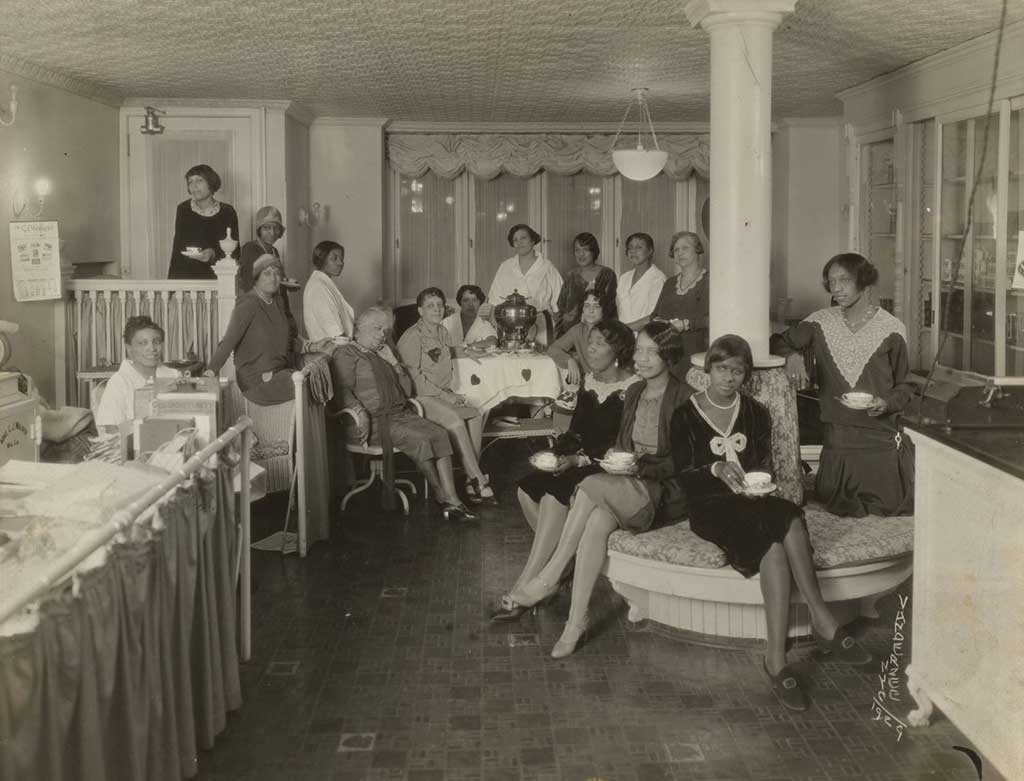
My art traveling buddy stated “from the start, I couldn’t help but feel that this exhibition would never happen again.” So, we took our time. The experience was incredible. I was so happy to see the Elizabeth Catlett self-portrait, with my own eyes! I walked away so grateful. I purchased the coffee table book and am currently on my fourth reading, cover to cover. The exhibition celebrated the hybrid culture formed between Black America, Africa, the Caribbean, and Western Europe and expertly showed how it reframed the ideas of twentieth century Modernist art in black artistic communities and its impact shaping present day black artists like Kara Walker, Kerry Marshall, Kehinde Wiley, Amy Sherald, Lauren Simpson, Rasheed Johnson, Nick Cave, McArthur Binion, Mark Bradford, Jordon Castell and Amoako Boafo, all whose works continue to delve into profound issues of race, identity and true representation of black experience in the world. The exhibition’s cross-cultural artistic approach to the legacy of the Harlem Renaissance embraced the aesthetics of social consciousness and how it became part of a culture-defining zeitgeist.
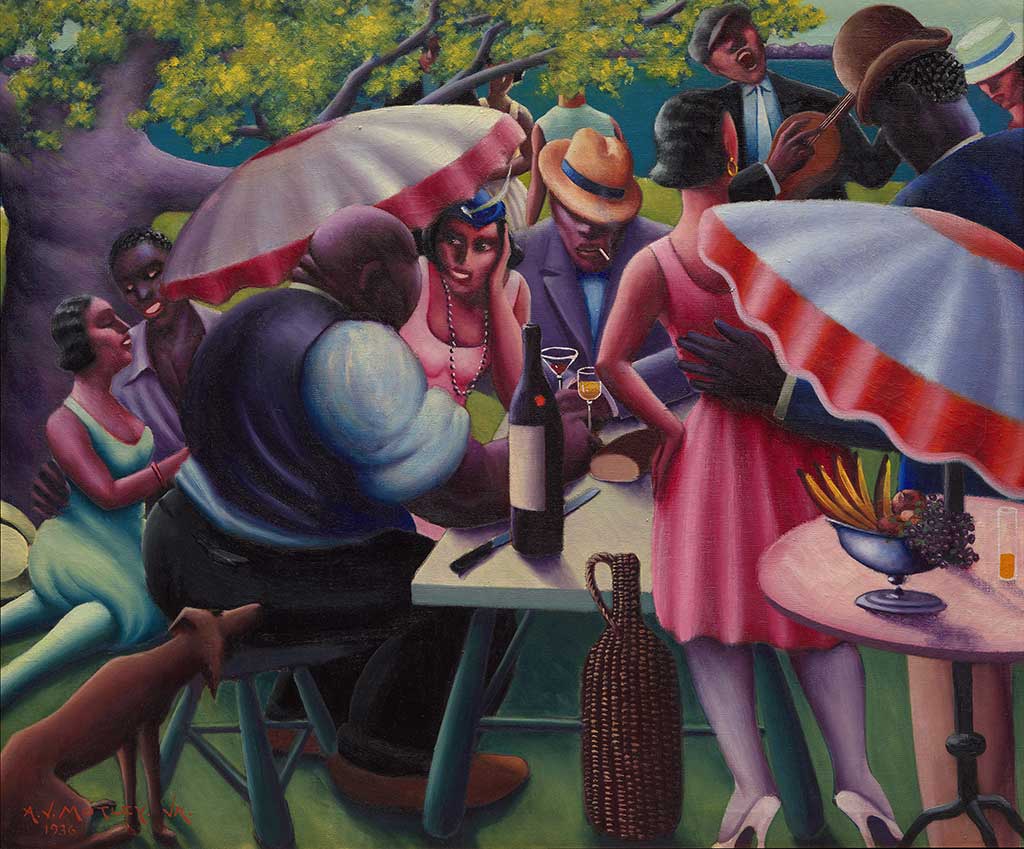
I learned the Harlem Renaissance was not only the ‘rent parties’, the uptown clubs like Cotton Club, where only black entertainers and black staff were allowed, so white patrons could seek out illegal alcohol until Prohibition ended in1933. Nor was it only listening to the foot tapping sounds of Duke Ellington’s Take the A Train or doing the lindy hop to Cab Calloway’s, the Hi De Ho Man or watching Josephine Baker’s amazing footwork in her ‘Banana Skirt’. Rather, it was a blend of histories of the black experience in Upper Manhattan, Harlem, the center of an explosion of art, writing and ideas that has since become legendary. The transatlantic mastery of European Post impressionist artist’s works such as Matisse’s, Women in White portraying his black muse, Laurette, and Hale Woodruff’s, Card Players influenced in part by Cezanne’s Card Players produced the ‘modern Negro art’. Aaron Douglas’ four panels mural Aspects of Negro Life: From Slavery to Reconstruction, under the sponsorship of the Works Progress Administration, demonstrated his signature style of sharp-edged flat figures that was popularized by nineteenth century French painter, Pierre Puvis de Chavannes.
This exhibition documents the Harlem Renaissance, begun about 1918, after World War I, that continued to 1937, a movement of race pride and activism to direct social, political, economic reform as African Americans were becoming keepers of their own destiny in the American Dream. Most importantly, the Harlem Renaissance instilled in African Americans across the country a new spirit of self-determination and pride, a new social consciousness, and a new commitment to political activism, all of which would provide a foundation for the Civil Rights Movement of the 1950s and 1960s.
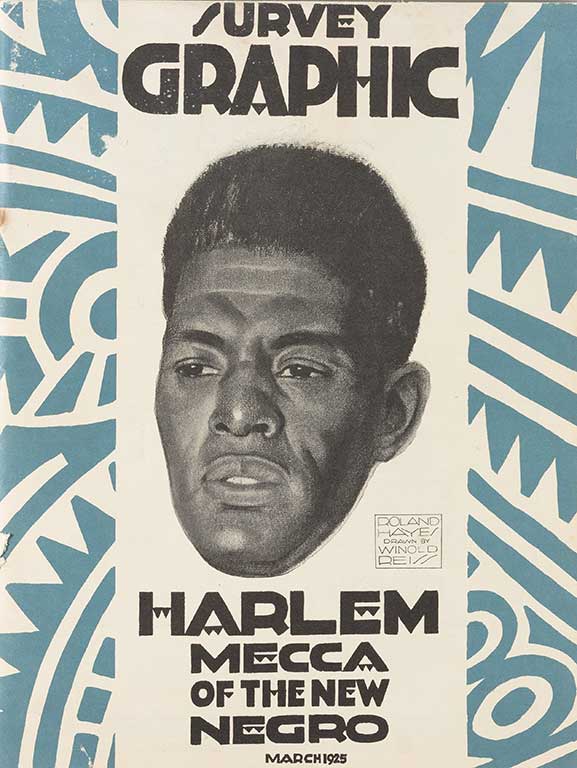
Harlem Mecca of the New Negro
The Harlem Renaissance was a global rebirth of black cultural heritage driven by the black experience in America with rebirth meaning reincarnating to new characteristics and a different physical form. The New Negro of the Harlem Renaissance were African Americans who were considered more refined, educated, sophisticated, and involved in the political process. During the era known as The Golden Age of Harlem, 1920-1929 Harlem became a destination for African Americans of all backgrounds. From unskilled laborers to an educated middle-class, they shared common experiences of slavery, emancipation, and racial oppression, as well as a determination to forge a new identity as free people. As the Great Migration picked up speed from 1910 until 1940, it began the push factors for African American workers to relocate to northern and midwestern cities. Poor economic conditions in the South, exacerbated by oppression in the form of Jim Crow laws and labor shortages after World War 1 began the ending of ‘plantation – slave culture’ and led to the unfolding of visual art, poetry, literature, theater, and music of the New Negro movement. The New Negro movement and the artistic outpouring extended to poetry, novels, theater, music and visual arts in New York, Chicago, Detroit and Pittsburgh. This juggernaut was centered in Harlem, home of many leading African American thought leaders, writers, artists, and entertainers. Their goal was to bring the African Americans into the modern world of the 19th century.
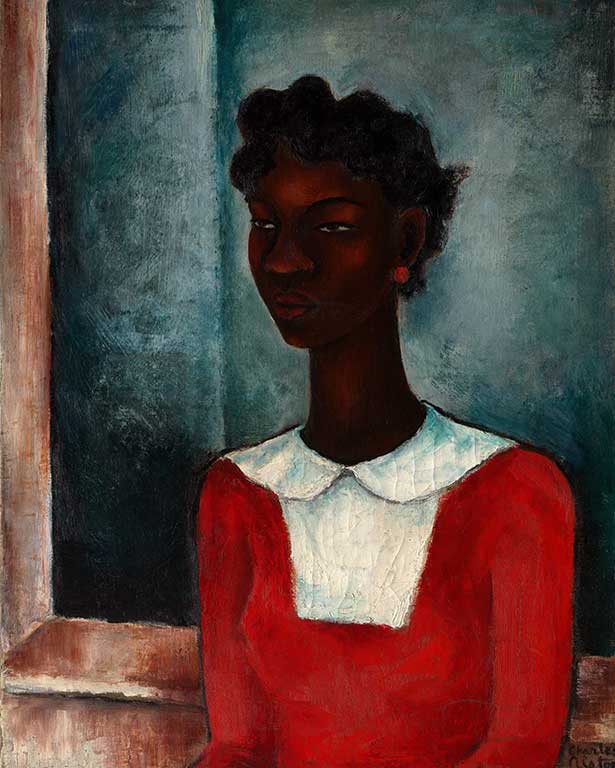
Migrating southern blacks did not want to simulate into the urban culture of “white controlled” cities. They saw an opportunity to build their own oasis for education, the arts, music and cultural pride. In 1925, Alain Locke’s periodical, The New Negro, the social voice for Harlem Renaissance, an anthology of fiction, poetry and essays on African and African American art and literature was created to chronicle the black cultural heritage as cultural relativism through the arts. Winold Reiss, the German American born artist moved to America because of his fascination with Native American and Black American people. Alain Locke was one of a series of black intellectuals he illustrated for the social reform journal Survey Graphics. Reiss’ portraiture of W.E. B. DuBois, shows his determination to show how African Americans viewed race as a socially constructed concept that greatly impacts peoples’ lives, rather than a mere biological distinction. These visionaries’ philosophy was the blueprint for the Harlem Renaissance Movement’s black identity as the New Negro. Notable architects of the Harlem Renaissance included Langston Hughes, the ‘Poet laureate of Harlem’. Winold Reiss’ stylized background of the portrait of Langston Hughes conveys a dynamic impression of Black urban experience, while the foreground features Reiss’ sympathetically drawn portrait of Hughes as the man who translated that experience into poetry. Zora Neale Hurston, writer, activist celebrated black culture of the rural south and wrote the autobiographical essay in 1928 How It feels to Be Colored Me. Music, theater, and poetry of James Weldon Johnson, Countee Cullen, Jean Tomer, Paul Robeson, Rhodes Scholar, and Duke Ellington, jazz musician, Josephine Baker, entertainer and activist became the inspiration for Post-Impressionist work by black painters. Modernism in the angular composition and cubist works of Jacob Lawerence is portrayed in his 60 individual paintings depicting the Great Migration pilgrimage to social justice. The exhibition includes portraits of Alain Locke, a Harvard- educated writer, critic and teacher known as the ‘Dean of the Harlem Renaissance’ and of W.E B. DuBois, Harvard-educated sociologist and founder of the National Association for the Advancement of Colored People (NAACP), writer of 21 books, who wanted African Americans to seek education, rid the stereotype of the head down and shuttle along to become sophisticated, aware, and involved in the political process that was changing rapidly in America. During the years of 1919-1927, four notable social reform publications; Crisis, the written voice for the NAACP, Opportunity, written voice for the National Urban League, Messenger, the political and literary magazine published by A. Philip Randolph and Chandler Owens, both Socialists and Marcus Garvey’s Negro World, Back to Africa became platforms for African American illustrators and writers to develop an authentic voice in American society.
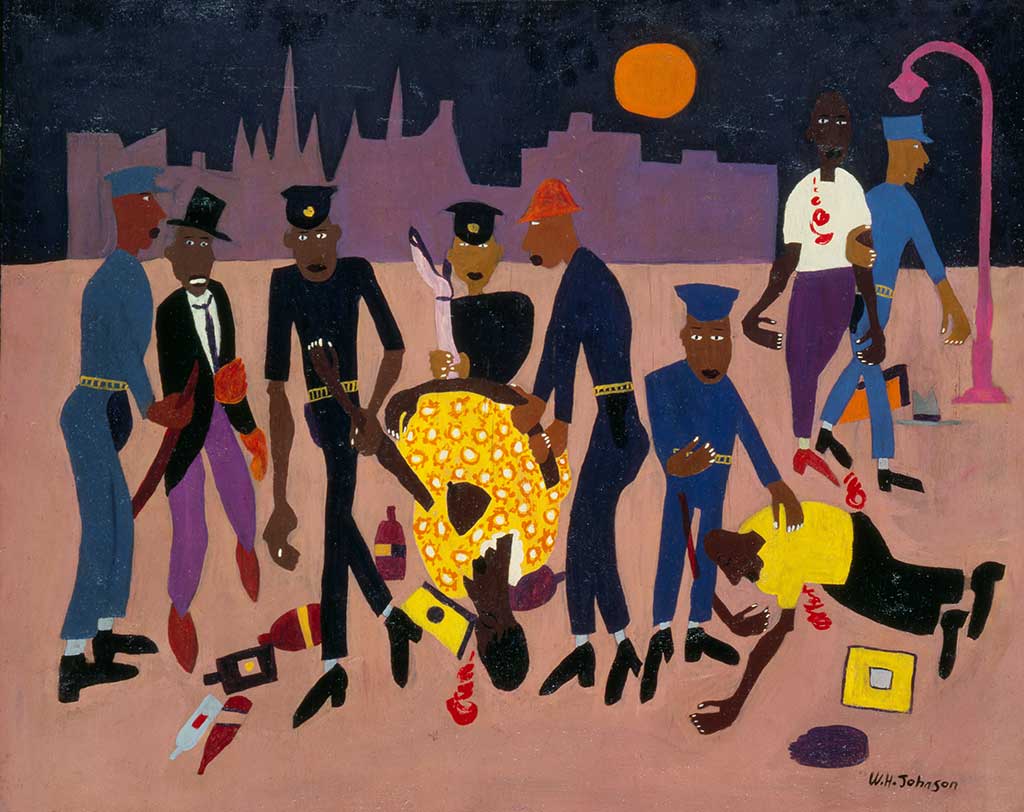
Aaron Douglas was the first artist to document the history of the African American experience through visual art. Douglas contributed designs for Locke’s The New Negro, and, on that basis, the author and publisher heralded the artist as a pioneering Africanist. Ideas and art relating to the Harlem Renaissance reverberated throughout the United States, Western Europe, and the Caribbean. Charles Alston, painter, sculptor, and the African American supervisor for the Works Progress Administration and Meta Warrick Fuller, sculptor, working in bronze to create naturalist objects including Ethiopia Statue depicted the African Diaspora and African American experience. Her work symbolized the emergence of the New Negro and the important role of black cultural heritage. William H. Johnson, born in South Carolina during Reconstruction, left home in 1917, educated in fine arts in New York and Provincetown R.I. and spent most of his time from the mid- 1920s to the late 1930s in Europe, where he was influenced by Post-Impressionism and Expressionism. Upon returning to New York, he adopted a self-consciously vernacular style marked by vivid colors and flat, distorted compositions, looking at African sculpture and African American models for inspiration. Archibald Motley was an American painter best known for his joyous depictions of black social life, as in Carnival and jazz culture in vibrant city scenes. Fascinated with natural and artificial light,
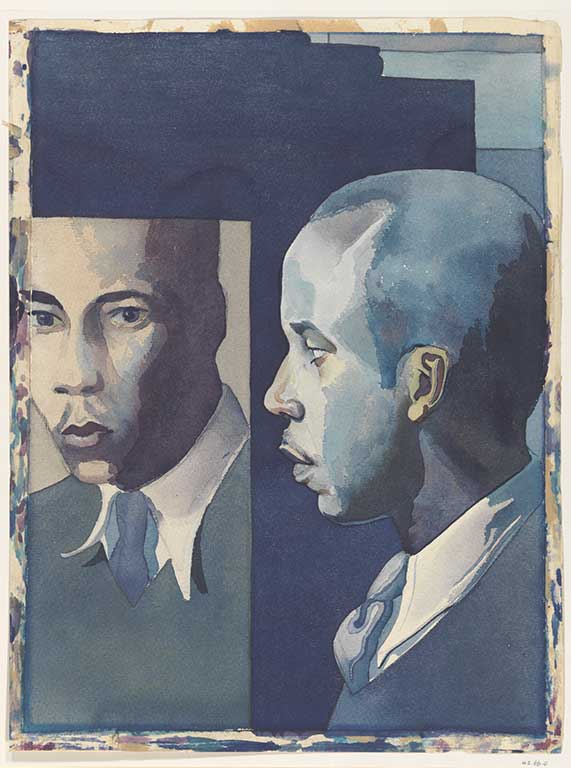
Motley chose glowing violet- red tones. Of one of his most famous paintings, Nightlife, the artist saw the opportunity to present, in his own words, “an expression of the numerous shades and colors which exist in such great variety” among African Americans in Chicago. Others were Augusta Savage, sculptor, James Van Der Zee, photographer of urban landscapes and the resiliency of African Americans in 1920’s Harlem, and Laura Wheeler Waring, best known for her portraits of prominent African Americans such as Marion Anderson, now in the Washington D.C.’s National Portrait Gallery. All the forementioned archivists and chroniclers of the Harlem Renaissance Movement were committed to the narrative of the oppression and the resistance to stop the ‘New Negro’ from embracing the rapidly changing black experience in 1920’s and 30’s America.
The Harlem Renaissance became a “spiritual coming of age” for African Americans in 19th century America. Creatives using literature, poetry, visual arts, sculpture, theater, and music of the Harlem Renaissance movement transformed the social disillusionment of race pride to pride in black life and identity, rising consciousness of inequality and discrimination, and interest in who we are as African Americans in the rapidly changing modern world. Although the creative boom of the Harlem Renaissance ended in 1933 with the stock market crash and The Great Depression, with the Harlem Race Riot of 1935 tolling the death knell for the Harlem Renaissance, the Harlem Renaissance continues to reverberate in modern culture, acting as a cornerstone for artists, writers and performers who seek to explore and celebrate the intricacies of the African American experience while confronting the pressing issues of our time.
Harlem Renaissance and Transatlantic Modernism Metropolitan Museum of Art, Feb 2024 – July 28th 2024

